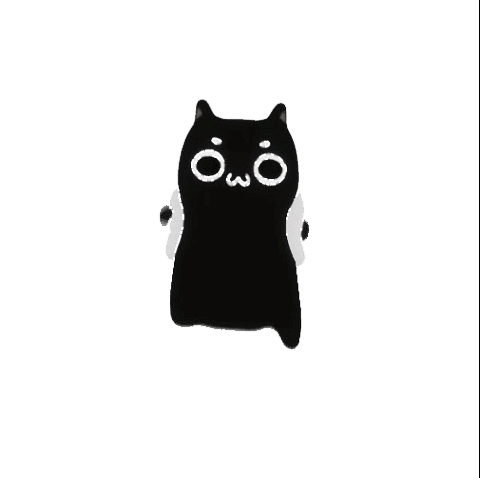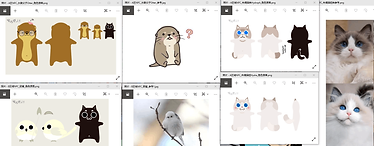
![IZNZ1Y6]VQUS)NCI`(~HR3Y.png](https://static.wixstatic.com/media/8426a5_0cb1c2941dd043c180b0050848e3ebf0~mv2.png/v1/fill/w_460,h_580,al_c,q_85,usm_0.66_1.00_0.01,enc_avif,quality_auto/IZNZ1Y6%5DVQUS)NCI%60(~HR3Y.png)
Kitty May Cry
3D || Adventure || Puzzle Game
Jul/2022
Leader Designer & Artist & Writer & Propagandist
A story about a cute black cat and his white bag.
A story about dreams and cute animals.
Team
Tan Yizhang — Leader Designer & Artist & Writer
Bot Hopps — Leader Programmer & TA
Jiarui Zhang — Sound Designer
Yanzhou Shen — Programmer
Haoting Deng — Designer
Published on steam: Nov.14/2022

Honors
Gold Award in bilibili Game Creation Contest
2022 IndiePlay Best Student Work Nominated
Aniwow China Animation Festival Best Game Award
Sales until 2024
Promotional Video
Game Preview
Played by a chinese Youtuber,about 1/5 game content.
Design

Worldview
World design and gameplay sketches.

Characters
Cute and easy-to-animate little creatures.

Plot
A small island like a real fantasy world.

World map
The game starts with the protagonist being thrown off the rocket and falling on the island.
The protagonist is rescued and loses his memory, knowing only that he has to return to the
rocket with his backpack.
Main story: On his way to the rocket's location, the protagonist passes by a beach, a forest
town whose celebration was interrupted by the rocket's fall, and a snowy mountain that was
deeply affected by the rocket's fall.
Subplot: The protagonist learns on his journey that the rocket's destination is in outer space
and that his dream is to press the cat's paw print on an alien planet, but the rocket is broken
and lacks fuel - emotional energy. Eventually, the player adds the rocket parts collected on
the journey and the memories and colliding emotions constructed with the NPCs to the
rocket and manages to fly to outer space and different planets depending on how the player
solves the mission.
In the end, the protagonist wakes up in a shaky state and realizes that he has just fallen
asleep and had a beautiful dream.
The game as a whole is divided into three interconnected areas: the coastal plain, the archipelago town and the snowy mountains.
Region division Multiple expected player movement lines
Beginner's Area: The game starts with the player being born in a basin, where the player learns that the ultimate goal is to get back up the mountain to the rocket. You will need to learn basic movement and get a backpack and an initial battery to gain gliding and multi-jumping abilities and to leave the basin. You can leave the newbie area after completing the basic interaction in the newbie tutorial area.
Level design whitebox in biginner area
Seaside Plain: The Seaside Plain area is divided into the Seaside Plain and the Tram Station, with the main route being to collect shells to buy a tram ticket to the next area. This area is dominated by simple puzzles and simple NPC side trips, where shells can be obtained through puzzles and side trips.
Archipelago Town: The Archipelago Town area is divided into residential areas and three exploration islands of varying difficulty and style. The main route is to collect the celebration balloons to light the celebration bonfire and ride the updraft to the snowy mountains.
Snowy Mountains: The Snowy Mountains area is a complex and intertwined path up the mountain, which limits the player's jumping ability and requires the player to plan their battery (i.e. stamina bar) and route up the mountain.
Below is a sketch of the overall map design and an aerial view of the final result.







The main reason for deciding on a fresh and cute style of game was that it was cost effective and manageable to achieve the experience I wanted the players to have.
As our group did not have a dedicated artist, the only programmer and technical artist was under a lot of pressure, and at first we actually opted for a low-poly style with stylised rendering among the several versions of character design and modelling options given. However, in the process of discussing the protagonist design with fellow technical artists, we decided to refer to designs from @EveryDayOneCat, a cat sketch animation blogger on Twitter, and Japanese manga artist のべ子's "Little Bean Mud is the Centre of the World", and eventually I settled on a flat, wide-eyed character and a less textured, celluar-finished scene style.
The main character is a biscuit-style black cat with short limbs and round, large eyes.
As it is in the third person view, the main visual focus of the player will be the backpack on the main character's back, so the backpack is designed to be white + black with round eyes, and physics are added to the eyes so that the backpack's eyes will bounce when the character moves.



NPC design: divided into important NPCs, minor NPCs and unnamed passerby NPCs, the overall style is based on relatively realistic creatures with flat bodies, short striped limbs and round eyes. Passerby NPCs are designed with replacement decals and accessories.



I was told in an internal NetEase lecture that the worldview is about letting the player know "about who I am playing as" and "I am happy to be who I am", i.e. it defines the game's art, text and rules, as well as enhancing the player's sense of immersion, honour and immersion. It is about defining the art, copy and rules of the game, as well as enhancing the player's sense of immersion, honour and agency.
In the article 'Game Design Deep Dive: Creating the 'spherical narrative' in The Invisible Hours', I came across another interesting point: spherical narrative. In real life, each of us is the protagonist of our story. However, at the same moment, we also play supporting and background roles in each other's stories - we play all these roles at the same time, and our stories cannot be separated from each other. Each of us is a thread in an intricate web of interdependent narratives.
The Main Lineage
In addition, I read an article by a senior planner in NetEase's internal learning library during my internship, who divided common game narrative techniques into four categories: the seemingly non-linear but homogeneous diamond narrative, the classic three-act style of conflict and resolution, and the recently emerging player-built narrative structure, as well as the pizza style, which is a fusion of all three.
The diamond narrative is the least complicated but can generate negative emotions when discovered by the player. I have already studied and practiced the three-act plot writing in the game narrative class, so I will mainly analyse the player constructed narrative structure and the fusion narrative structure.
Firstly, there is the player-constructed narrative structure. "Campfires in the Dark" is an idea shared at GDC by Failbetter Games, the studio that produced Sunless Sea.
The "campfire" represents the object that the game creators control and put into the game to create the plot content, and when the player "sits around" the campfire they are told a story while the rest of the game world is unobservable. At this point, the player is free to interact with the system until they find the 'campfire'.
This approach therefore tends to focus more on a 'player-built' story than on a 'story that needs to be told'. This narrative approach is a bit like a mix of the main quest plot and the character's background setting for the quest plot. The story itself is non-linear, so that those who are not interested in the story do not have to engage with it, and for those who are, the game encourages them to explore and find it through the 'bonfire'.
Menu & achievement page text system based on UE5 blueprint
In the game, such a 'bonfire' often acts as a pivot, which can mean many different elements of the game, from a small totem to a mural to a large village or town.
The most important aspects of being a 'bonfire' are the following: 1. a place where players can gradually recognise the story rewards that are available to them; 2. a separate 'bubble' from the rest of the world's 'dark corners'; and 3. a place where players can find their way around the world. 3. the player has an incentive to interact with the place, but it is not for the purpose of passing the level.
The story can be presented in the Bonfire in a variety of ways, from a scene with lots of chatty NPCs that can be accessed through dialogue, to a library with lots of documentary stories that can be accessed through the content of various documents, and so on.
The most classic example of this is the narrative logic of the Legend of Zelda series, where the player has a clear main story line that ends the same way regardless of the intermediate options, but within these intermediate options there are three acts that gradually unfold, in addition to a 'bonfire' to pique the player's interest and drive them to build the story through Personally, I think this blend of narrative techniques is particularly evident in The Legend of Zelda: Skyward Sword and The Legend of Zelda: Breath of the Wild.
Returning to our game, author has attempted to practice it with my own shallow abilities. In addition, I aids characterisation mainly through oral fetishes, inflections and dialects.



